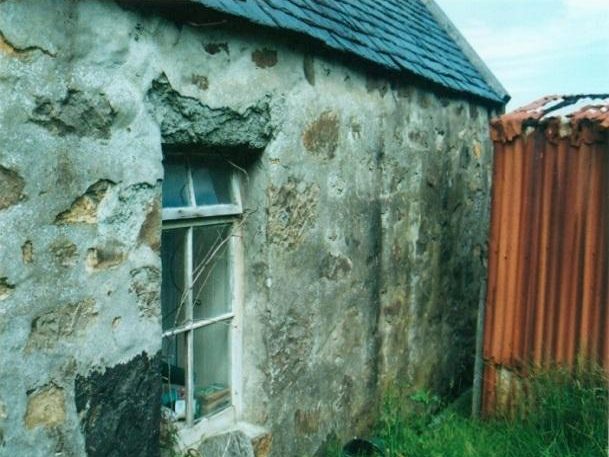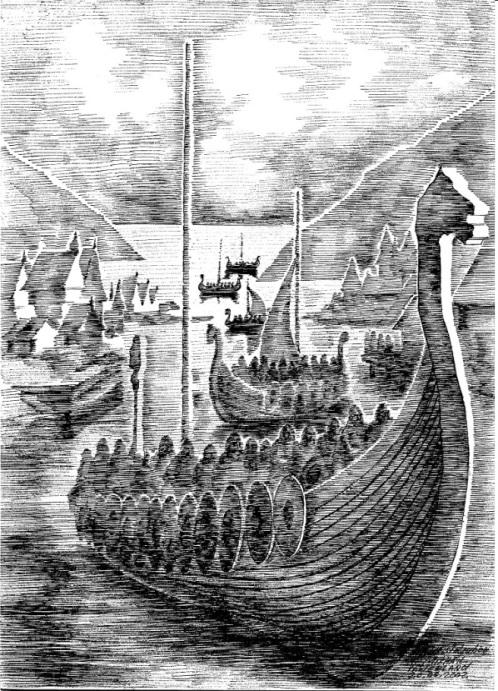My mother was not that concerned with the ‘history’ of the island, except concerning her own family. In fact, the island’s history is so rich and diverse that it needs a historian to describe it and understand it. But the casual visitor to Eigg – at least when I visited the island in 2006-2007, will encounter ‘unattended’ relics of all kinds. Not least the graveyard and the old monastery near the Kildonnan Farm. Wikipedia provides the following information about Saint Donnan, perhaps the best known historical figure of the island.
“The Irish missionary activity which brought Columba to Iona also brought Donnán to Eigg, where he attempted to establish a monastery, at Kildonnan. According to traditional legends, a Pictish queen took objection to this breach of her sovereignty. She sent agents to Eigg to kill him, which they did on the eve of Easter, in 617; traditionally, Donnán had a large number of companions with him, whom he requested were killed first.”
Below is the an impression of Saint Donnan preaching to the people of Eigg was executed by the Baltic artist, Mikhail Khristoljubov.

Saint Donnan and the Church
Kildonnan (Scottish Gaelic: Cill Donnain, that is, ‘Donnan’s cell’) is named after the Irish monk who brought Christianity to the island founding a monastery at the end of the 6th century. Donnan was martyred on Eigg along with his monks in the ruins of the church.
The church was most probably a 16th century construction. It is not as the casual visitor might imagine from the time of St. Donnan in the sixth and seventh centuries. Matters are confused by the inclusion in the 16th century church of a pagan goddess, Sheela na Gig. I took a photo of this Pagan goddess when I visited the island in 2008. However, as you can see the sculpture is somewhat washed by time so little of the original features remain.
There is evidence of earlier religious settlement in four cross slabs which date from the early medieval period. Records also list a religious settlement here in 725, so it would seem that the monastery continued after St Donnan’s death. The weathered heraldic panel in the north wall bears the Clanranald coat of arms: a hand holding a ringed cross, a bird and a lion, a galley and a tower.
Local tradition suggests that a burial aisle inside the church’s walls was built by Angus MacDonald of Arisaig as penance for his murder of Dugald of Morar. Dugald’s descendants, the MacDonalds of Laig, are buried within the walls of the church.
After the Reformation, when the island was left without a priest for 80 years, the roofless church became the island graveyard, each row of grave-slabs representing an extended island family.
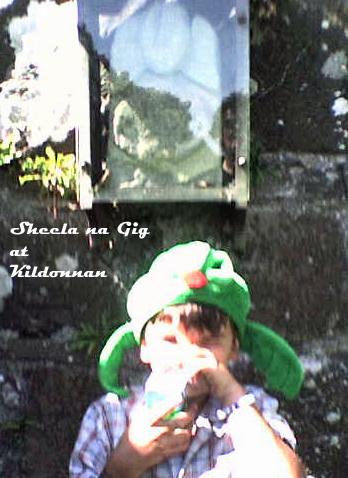
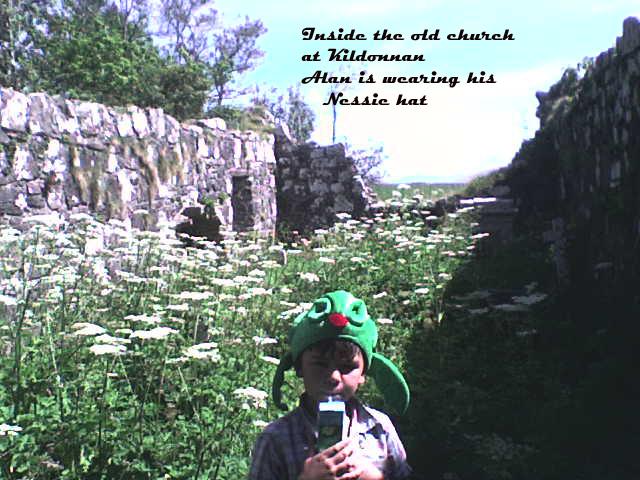
Kildonnan Graveyard
A separate Protestant graveyard was then made south of the church when the Small Isles Parish was established in 1740. At that time Kildonnan was known as Kirktown and included the minister’s Glebe. Catholic islanders carried on using the nine rows of grave-slabs inside the church until the early twentieth century. Today, this tradition is still observed with lines continuing outside the church along the same axis to the south.
I’m not a Scottish historian or an archaeologist, so my observations here are very much as a ‘casual observer’. But even specialists will have problems trying to establish the real ‘historical truth’. A project, ‘Uncovering the story of Kildonnan Graveyard’ was begun in 2012.
Matters are complicated by the inclusion of pagan images in the 16th century church. This complication is impounded by the fact that it is said that a pagan queen, Queen Moidart, and her women warriors, the ‘Big Women’, executed Donnan by beheading him and his monks or by burning them. Other sources state that Donnan and his monks were slaughtered by the Vikings. Of course, even by the observations of a casual observer, such as myself, this doesn’t make much sense as the Viking period was generally accepted to be between 793–1066 AD – while Donnan was murdered at the beginning of the seventh century – almost two hundred years before.
Nevertheless, it seems that, from the early 9th century, the pagan Norse Vikings also used Kildonnan to bury their dead. Regarding Viking finds at Kildonnan is the magnificent sword hilt shown above.
The Cross at Kildonnan
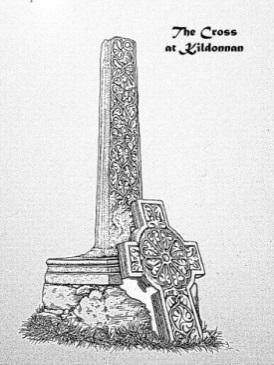
During the Middle Ages, a large cross was built at Kildonnan; local tradition reports that there were a series of such crosses arranged along the island, now only indicated by place-names. This cross is still located on the island near the Kildonnan farm.
Was Saint Donnan murdered by Queen Moidart’s women warriors? Find out here: Legend of the Big Women of Eigg
